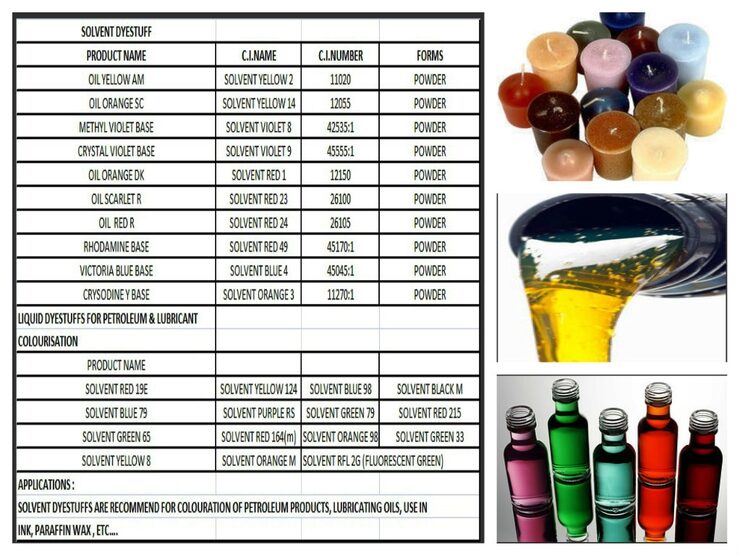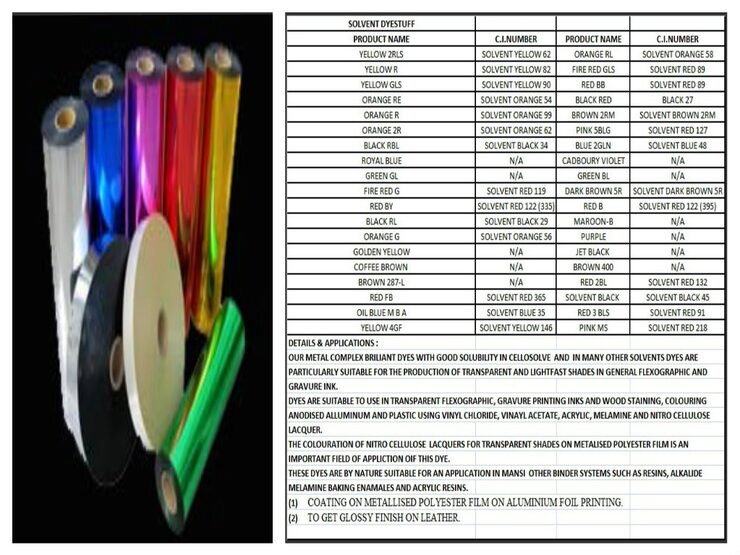Solvent dyes are a class of dyes that are soluble in organic solvents rather than water. Unlike water-soluble dyes such as acid, direct, or basic dyes, which are used primarily for dyeing materials like textiles and paper, solvent dyes are mainly used for coloring non-polar materials such as plastics, waxes, hydrocarbon fuels, and other organic materials.
Solvent dyes are often chosen for their excellent solubility in various organic solvents, allowing them to disperse evenly and produce vibrant and transparent colors in the substrate. They are commonly used in industries such as plastics manufacturing (for coloring plastics like polystyrene, polyethylene, and PVC), inks (for printing on non-porous surfaces like plastic films and metal foils), and automotive fuels (for dyeing gasoline and diesel).
The dyeing process with solvent dyes typically involves dissolving the dye in a suitable organic solvent and then applying the dye solution to the material to be colored. The dye molecules penetrate the substrate and disperse evenly, resulting in the desired coloration. Solvent dyes are particularly valued for their resistance to heat, light, and chemicals, which makes them suitable for applications where durability and color stability are important.
Due to their solubility in organic solvents, solvent dyes are not suitable for use with water-based systems like aqueous paints or in dyeing materials that are polar in nature, such as textiles. Instead, they are specifically formulated for use with non-polar materials where other types of dyes would not be effective.
In summary, solvent dyes are a versatile class of dyes used for coloring non-polar materials such as plastics, fuels, and inks. They offer excellent solubility, color strength, and resistance to external factors, making them valuable in a range of industrial applications.



